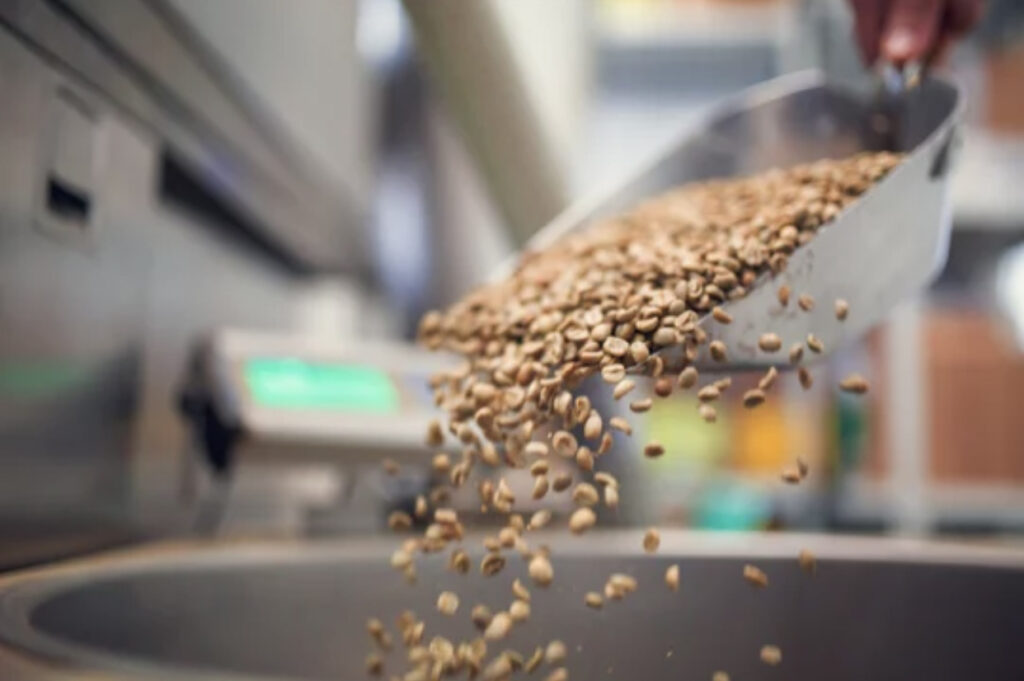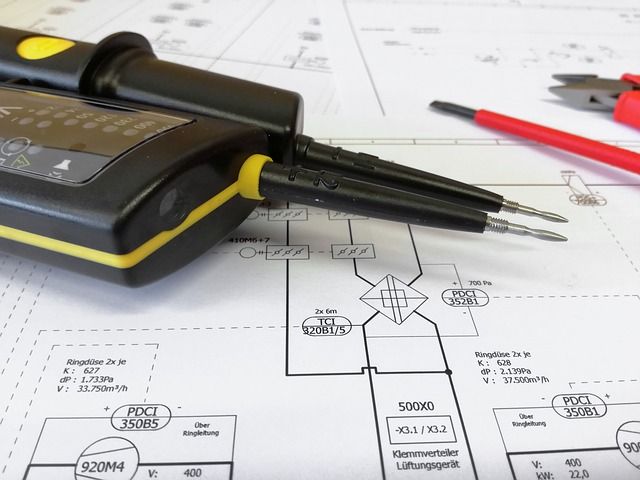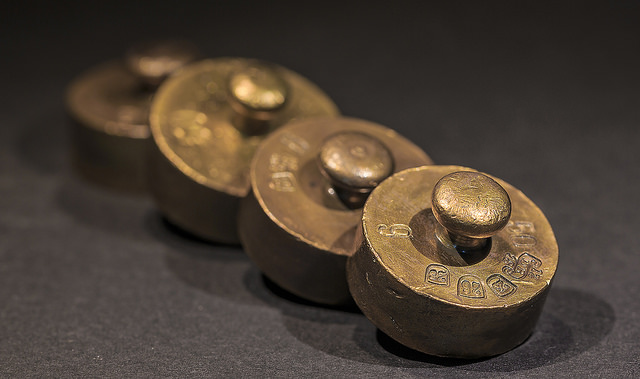Weighing

In weighing processes the product capacity and the total product amount can be determined. Advantages or continuous weighing are uninterrupted product flow and constant and permanent feeding of the following machines.
Continuous quantity measurement of free flowing products

Fig. 2: Continuous weighing with the Baffle Pipe Weigher
Sometimes it is not possible to weigh the bulk with a discontinuous weigher. To avoid an interruption of the process, the bulk has to be weighed continuously. This is possible by using a Vertical Pipe Weigher. A baffle plate transmits the weight to a sensitive load cell. The results are the actual flow rate in t/h and through integration the whole conveyed weight in kg.
The following picture describes the function of a continuous working baffle weigher. The bulk enters through the feedpipe. It is braked by means of a 90° falling brake. Thereby the bulk can be accelerated with a defined velocity. Following the bulk strikes on a baffle pipe. Inside this pipe the striking force and the affection on the pipe bending at the outlet is measured.
Continuous quantity measurement of heavy flowing products

Fig. 1: Conceptual Drawing of the Rotor Weigher
The complexity of weighing products like flour, powder, dust, e.g. lies in their inappropriate capability of flow. Because of that, it is very difficult to weigh these products. Cakings often lead to inaccurate measuring results. This handicap can be solved with the Coriolis-System. Coriolis weighers evaluate the torque, which results if solids are accelerated radially and deflected tangentially.
Coriolis Weighers measure the torque, which is the resulting force when solids are being accelerated radially and deflected tangentially.
Because of the high acceleration in the Coriolis Weigher the product stays permanently in rotation and is not able to form bridges or cakings. Measuring works continuously. Vibrations of the assembly area or the density of the product don´t have any effect on the results of measurement. Force has a tangential effect, while friction shows a radial direction. It is not necessary to recalibrate the Rotor Weigher when changing the product to be weighed.
The Rotor Weigher is based on the Coriolis priciple.
Use

What tasks should the weighing system fulfil?
For what purposes and tasks do I want to use the weighing system and what should it be able to do?
For example, is a legal-for-trade system needed or just a checkweigher?
Should it work continuously or discontinuously?
The answers to these questions have a great influence on the decision for the right system. In addition to performance, cost-effectiveness often plays a role.
When deciding for or against a certain system, the question then arises: How important is a certain function or feature for my process?
Integration

The integration of a component is realised via its interfaces.
The question of integration is always the question of the interfaces of a system. This refers to both the mechanical and the electrical interfaces. The simpler and more standardised an interface is, the easier it is to integrate the associated component.
Furthermore, the question of the depth of integration should also be asked. Thanks to progressive automation and digitalisation, there is a great variety of possibilities. But which possibilities should actually be realised? What makes sense? What brings real added value? And what is still economically justifiable at all?
Accuracies

When specifying the measurement tolerance, a reasonable objective should be considered.
One of the most important objectives in weighing is to achieve high accuracies in the measurement result, i.e. the more accurate the result, the better the weighing technique.
However, some aspects should be considered here:
1. the closer one gets to the 0-tolerance limit, the more the investment costs increase. Every tenth has to be bought at a high price.
2. the sensitivity increases with increasing accuracy. For example, a weighing technology can achieve a very low measurement tolerance, but the environmental conditions are not at all adapted to this measurement technology.
3. what effect does the accuracy have on my subsequent process? If, for example, you use a discontinuous weighing technology, the subsequent process steps must also be able to process the discontinuous mass flow.
4 Accuracies that can be achieved under laboratory conditions are often no longer feasible under practical conditions. Therefore, the system should be able to cope with robust applications and practical hurdles. After all, what good is a very low deviation in a model test that is never achieved in normal operation?
We therefore recommend a sensible consideration of the goals and limits in advance, i.e. what the system should and should not achieve under which boundary conditions.
Typical applications
The following applications are typically implemented with FRIEDRICH electronic systems. In particular, the optimisation of cost-intensive process variables offers enormous potential.
Please contact us if you need advice for your application.
Monitoring of processes by recording mass flows
A continuous weighing system is used to monitor a process. The recording of a mass flow provides information about the degree of utilisation of the process or the free potential available in the process. Through continuous monitoring, faults can be quickly detected and eliminated. The user can keep an eye on a much larger number of process data from the control room, for example. Various processes can also be automated more easily.
Monitoring silo levels and recognising future demand
With quantity recording, silo levels can be recorded and booked. This makes it much easier for the user to see when which products need to be reordered or when an upstream process needs to start production. This reduces complexity and centralises the process to a single point.
Determination of parameters and targets
With the help of quantity recording, targets can be checked. When can a certain production quantity be expected? When will a target value be reached? After what time can I calculate with a quantity?
Early error detection and avoidance of downtimes
In order to detect errors in time, process data must be available quickly. Only through the constant monitoring and timely availability of process data such as product performance, can failures of processing steps be detected and remedied at an early stage. This reduces downtimes of the production process and increases the utilisation of the process.
Calculation of process yield
In many processes, a yield of the product must be monitored. Only then can components, machines and actuators be adjusted to optimise the yield. The faster a value is available, the better the process can be optimised for this quantity. The user can more easily recognise dependencies and find the best performance level. Various additional tools are available for this purpose.
Loading bulk goods and avoiding overloading
In many loading processes there is no direct weighing available. Often there is the problem that frequent overloading slows down the entire loading process, the overloaded quantity has to be unloaded again at great expense. In this case, a continuous system can considerably facilitate the filling process. By using a continuous scale, a certain loading quantity can be preselected and metered in. The calibrated weighing then takes place in the following step, when the actual loading has already taken place.
